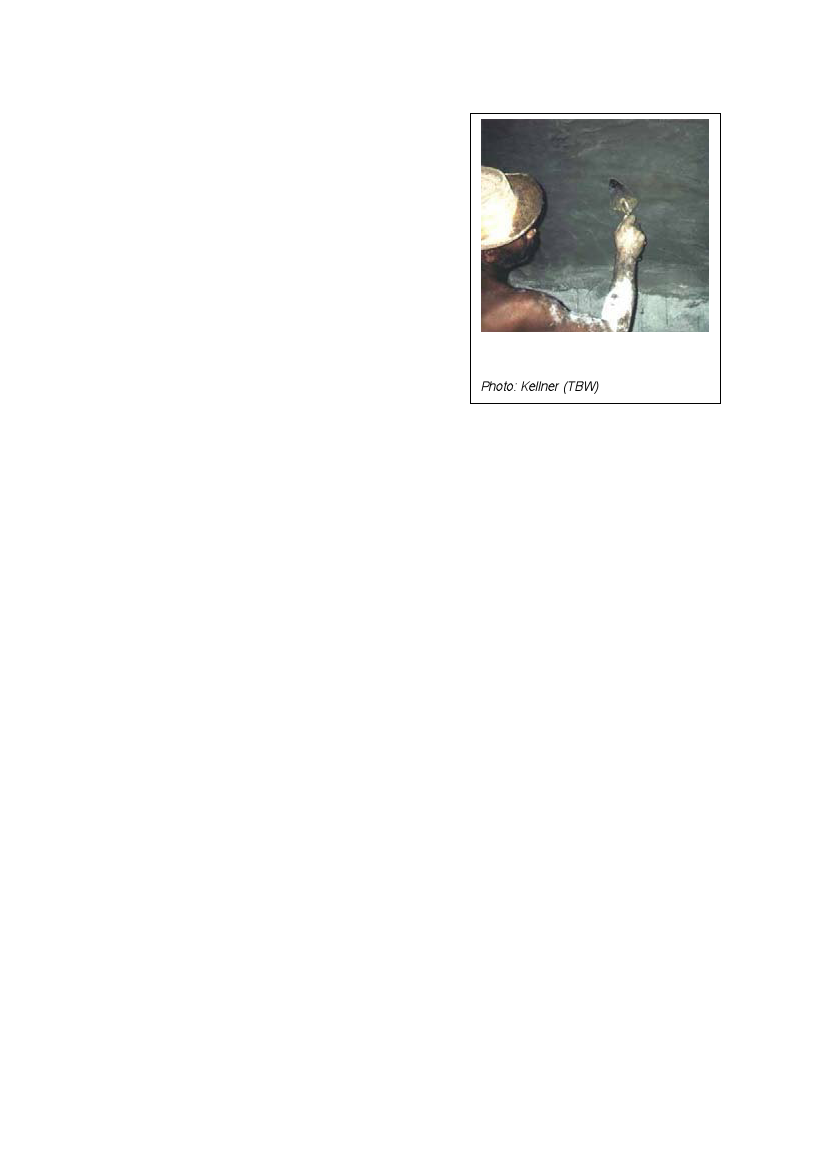
Plasters and Coats for Digester and Gas-Holder
In industrialized countries, most of the new
digesters are built of gas-tight concrete or steel.
Additives are mixed into the concrete to render it
gas-tight. If existing concrete vessels are used, their
gas-tightness has to be checked. Often, they have
not been built from gas-tight concrete or cracks
have formed over time which allow the gas to
escape.
It is important to check the digester and piping
system for gas-tightness prior to putting the biogas
unit in service. If leakage is detected only during
operation, the digester has to be emptied, cleaned
and plastered again. Rectifying a leakage before the
initial filling is a lot cheaper.
In developing countries, digesters are usually
masonry structures. The plastering has to be
watertight up to the lowest slurry level and gas-tight
from the lowest gas level upwards (gas-holder). The
plaster has to resist moisture and temperatures up
to 60°C reliably. The plaster must be resistant to
organic acid, ammonia and hydrogen sulfide. The
undercoat must be absolutely clean and dry.
Figure 40: Inside plaster of the
gastight section of a fixed dome
digester
Photo: Kellner (TBW)
Cement plaster with special additives
Good results in water- and gas-tightness have been achieved by adding 'water-proofer' to the
cement plaster. For gas-tightness, double the amount of water-proofer is required as
compared to the amount necessary for water-tightness. The time between the applications of
the layers of plaster should not exceed one day, as the plaster becomes water-tight after one
day and the new plaster cannot adhere to the old plaster. The following 'recipe' from
Tanzania guarantees gas-tightness, provided the masonry structure has no cracks:
1. layer: cement-water brushing;
2. layer: 1 cm cement : sand plaster 1 : 2.5;
3. layer: cement-water brushing;
4. layer: cement : lime : sand plaster 1 : 0.25 : 2.5;
5. layer: cement-water brushing with water-proofer;
6. layer: cement : lime : sand plaster with water proofer and fine, sieved sand 1 : 0.25 :
2.5;
7. layer: cement screed (cement-water paste) with water-proofer.
The seven courses of plaster should be applied within 24 hours.
A disadvantage of cement plaster is their inability to bridge small cracks in the masonry
structure as, for example, bituminous coats can do.
Bitumen (several layers)
Bitumen coats can be applied easily and remain elastic over long periods of time. Problems
arise in the application as the solvents are inflammable (danger of explosion inside the
digester) and a health hazard. Bitumen coats cannot be applied on wet surfaces. The drying
of masonry structures requires several weeks, unless some heating device (e.g. a charcoal
stove) is placed inside the digester for two to three days. Furthermore, the bituminous coat
can be damaged by the up-and-down movement of the slurry.
61